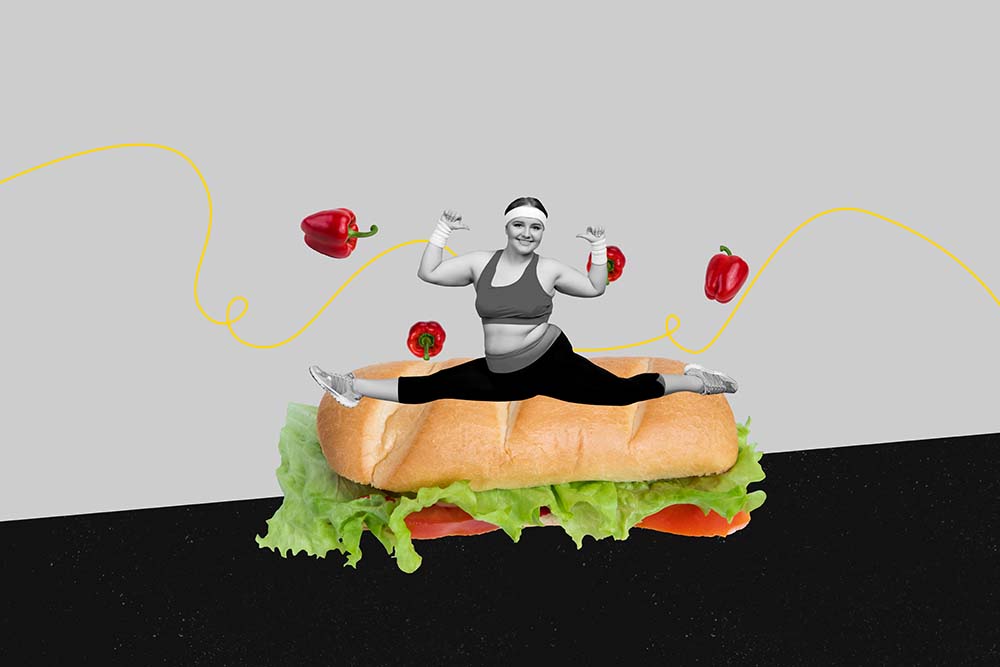According to the World Obesity Federation, India has the third-highest global obesity rate. When an individual’s BMI is more than 27.5, they are considered obese. It’s sad to note that India's obesity rate has nearly tripled in the last ten years, affecting the nation’s urban and rural inhabitants equally. People of all ages are being impacted by the global obesity issue. Data suggests that obesity rates are high in India due to the country’s rapid economic growth and shifting social norms. In India, around 100 million people suffer from obesity.

It has been observed that obesity in the abdomen is rather common. 40 per cent of women and 12 per cent of men in India are obese around the abdomen. The states with the highest incidence rates are Kerala (65.4 per cent), Tamil Nadu (57.9 per cent), Punjab (62.5 per cent), and Delhi (59 per cent). The lowest incidence is found in Madhya Pradesh (24.9 per cent) and Jharkhand (23.9 per cent).
Obesity is defined as the accumulation of excess body fat, and body fat distribution has a significant impact on metabolic risk. Depending on where the fat is stored, obese individuals usually have one of two body types: an android or apple shape, where fat is stored in the upper body (visceral or abdominal obesity region), or a gynecoid or pear-shaped body, which is fat in the lower body (hips and thighs). However, visceral or abdominal obesity, more often known as central obesity, is associated with a number of metabolic issues and diseases.

There has also been a rise in childhood obesity in India. Obesity in children has become much more prevalent. According to a recent study by the Indian Council of Medical Research (ICMR), there has been a worrying increase in childhood obesity in India in the last ten years. According to statistics, in India, there are currently 14.4 million obese youngsters. Sedentary lifestyles, poor dietary choices, and inactivity are the main contributors to childhood obesity. As the availability of processed snacks and fast food are becoming more and more popular, children are consuming foods high in calories and low in nutrients, which leads to weight gain and obesity.

The effects of obesity on women
Hormones and other substances that induce inflammation are produced by fat cells, especially those located close to the waist. While inflammation is an essential element of the immune system and plays a role in the healing process, it can also result in various health problems. Increased blood sugar levels and, eventually, diabetes and all of its complications can be brought on by inflammation, which can also change the body’s sensitivity to insulin and the way fats and carbohydrates are metabolised. Obesity poses a high risk for women including PCOS, postmenopausal breast cancer, endometrial cancer, and pregnancy complications like gestational diabetes, preeclampsia, requiring a caesarean delivery (C-section), blood clots, excessive bleeding after delivery, premature birth, miscarriage, stillbirth, and brain and spinal cord injuries.
Causes of obesity
Genetics, ageing, hormonal changes, and pregnancy—given how hard it can be to lose weight gained during pregnancy—are the main causes of obesity. An unusual condition called Prader-Willi syndrome results in an increase in appetite at birth. PCOS, or polycystic ovarian syndrome, is marked by an imbalance in the hormones used for female reproduction. Excessive levels of cortisol, the stress hormone in your body, along with hypothyroidism, or an underactive thyroid, a condition where the thyroid gland produces insufficient amounts of multiple hormones, are the hallmarks of Cushing syndrome. Osteoarthritis (OA) and other conditions can make exercise uncomfortable or impossible.

Here are some suggestions to eat healthy and mindfully -
• Half of your plate should consist of vegetables. Whole grains like whole wheat bread, brown rice, and muesli should be used in place of refined grains like white bread, spaghetti, and rice.
• Eat foods high in lean protein, such as fish, poultry, beans, and soy

• Refrain from sugary drinks and junk food. Sugary beverages, such as juice and sodas, ought to be shunned, and it’s best to cut back on alcohol intake as this will lower the chance of heart disease, type 2 diabetes, and other ailments.
• Reward yourself: Make a money-storage jar as a substitute for giving yourself pizza when you reach your weight-loss objectives. Add some amount to your account each time you work out, and use it to finance a trip or a non-food treat for yourself. Maybe even a new dress!

You can prevent a number of negative outcomes, including type 2 diabetes and high blood pressure, by keeping a healthy weight. Obesity may affect your physical and mental health, so talk to your doctor about upping your physical activity, maintaining a balanced diet, and scheduling therapy sessions. Always remember to savour the little things in life, like the feel of the sun on your cheek, the sound of birds chirping in the trees, or anything else that brings you joy.